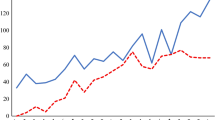
Overview
- Offers theoretical background and real-world best practices
- Written from a Euro-system perspective
- Includes supplementary material: sn.pub/extras
Access this book
Tax calculation will be finalised at checkout
Other ways to access
About this book
Similar content being viewed by others
Keywords
Table of contents (14 chapters)
-
Front Matter
-
How Does a Venture Capitalist Work and Why is Venture Capital Necessary in Modern Economies?
-
Front Matter
-
-
Venture Capital in the Financial System, Market Trends in Europe and the Relations with Banks and Stock Exchanges
-
Front Matter
-
-
Venture Capital in Italy: Regulatory and Legal Issues
-
Front Matter
-
-
Back Matter
Editors and Affiliations
Bibliographic Information
Book Title: Venture Capital
Book Subtitle: A Euro-System Approach
Editors: Stefano Caselli, Stefano Gatti
DOI: https://doi.org/10.1007/978-3-540-24829-3
Publisher: Springer Berlin, Heidelberg
-
eBook Packages: Springer Book Archive
Copyright Information: Springer-Verlag Berlin Heidelberg 2004
Hardcover ISBN: 978-3-540-40234-3Published: 19 August 2003
Softcover ISBN: 978-3-642-07300-7Published: 30 November 2010
eBook ISBN: 978-3-540-24829-3Published: 02 November 2012
Edition Number: 1
Number of Pages: XII, 423
Number of Illustrations: 160 b/w illustrations
Topics: Finance, general, Quantitative Finance, Macroeconomics/Monetary Economics//Financial Economics, Economic Policy



